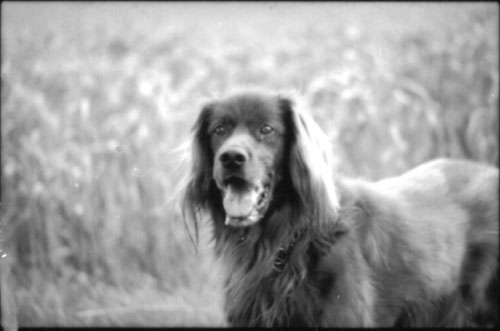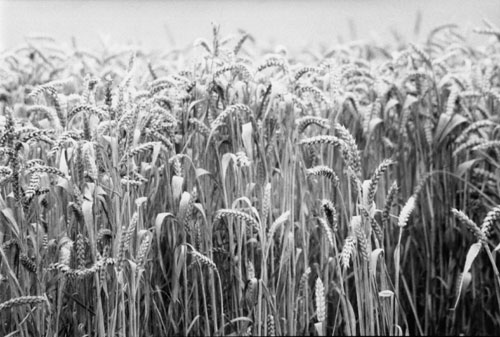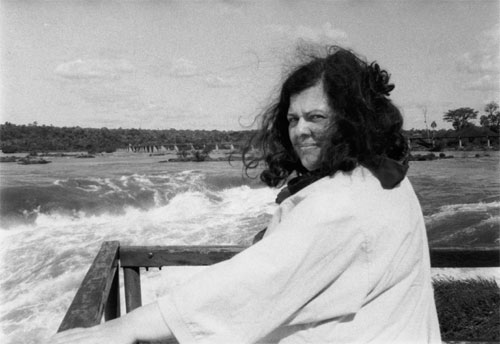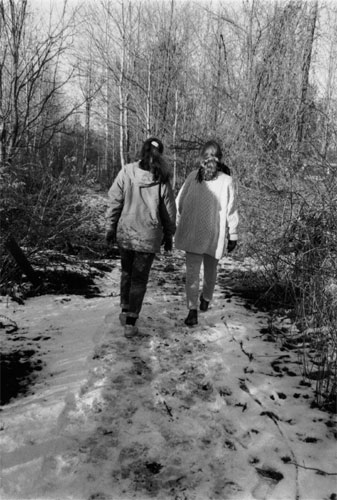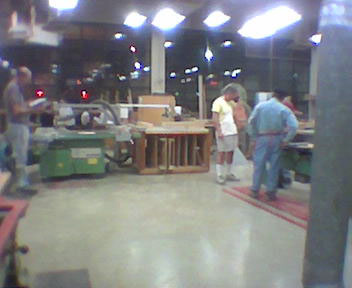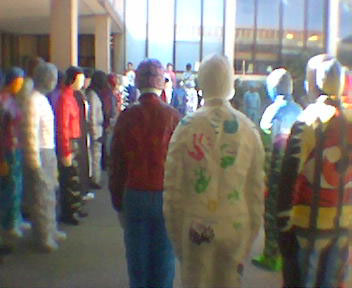I spent five hours in the darkroom today.
First I walked around campus taking pictures for my series of photos of graffiti in context. I found some interesting ones, and made some observations:
1. The best graffiti is located near places where food is sold.
I guess people tag these places so they can remember where they got something good to eat. It does seem odd, but I found a lot of great, artistic tags right near the catering truck and the little snack shack, and the stuff in between was really uninspired.
2. Taggers who use stickers are really lame graffiti artists.
I think a tag on a sticker has to be higher quality than a tag done directly on an object, because the maker clearly had more time to work with it, but usually the tags on stickers are mundane things, while the tags on objects are graceful and free.
3. There's very little graffiti up at the top of steep staircases on a windy outlook.
Apparently, taggers are lazy. That, or they don't take science classes. On the other hand, I found one tag in a lovely location by the Science building, so maybe it's just that the college cleans things up faster up there.
4. Graffiti in bathrooms and other private enclosed spaces is usually about sex.
Maybe it's because it's "shameful," or because it's "private," but for some reason, on this campus, graffiti in public is either tags or political ("Lose Bush"), while graffiti in the bathroom or in the film developing rooms (private darkrooms where you can turn on a white light when you need it) is almost exclusively sexual in nature, and almost entirely made up of people trying to use as many "naughty" words as possible. One piece I saw was basically a stream-of-consciousness list of obscenities.
Anyway, I took a whole roll of pictures of graffiti and a few other things, and then developed the film (I misloaded it because I was impatient, and lost four shots to sticking), made contact sheets, and did a whole bunch of prints. Five hours in the darkroom is a really long time. My eyes were really worn out from being around all that fixer and then going from dark to light all the time. It does get easier, but it was still tiring.
